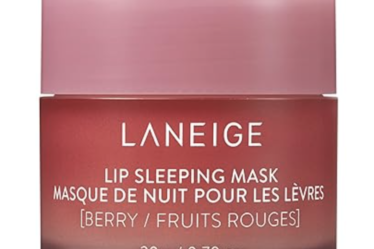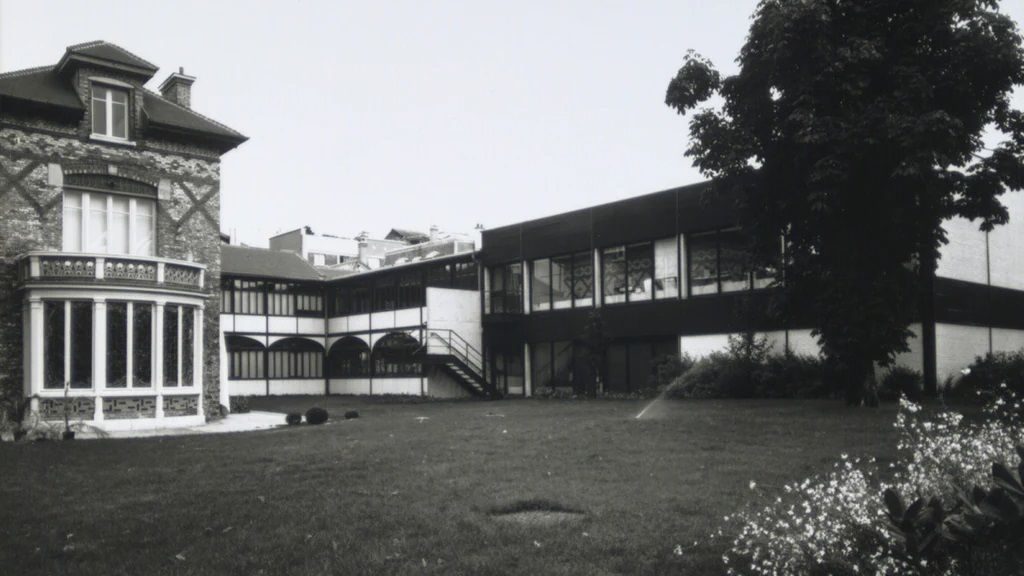
Often hailed as the world’s most prestigious luxury brand, Louis Vuitton needs no introduction. Yet, its hallowed stature in the world of fashion and humongous business enterprise demands a retelling of the glorious history of Louis Vuitton. It is, after all, built on the dreams and aspirations of a teenager some 200 years ago — one that has and will continue to inspire countless generations.
Louis Vuitton, the brand, is today a division of LVMH Moët Hennessy Louis Vuitton, simply known as LVMH or Louis Vuitton — a holding company which came into being in 1987 with the merger of the fashion house with Moët Hennessy.
One can get an idea about how massive LVMH is today through some of the luxury fashion brands it controls — Bulgari, Celine, Fendi, Givenchy, TAG Heuer, and Tiffany & Co. among others. Each brand has a storied history of its own and its own distinct image. And all of them are technically managed by LVMH, which functions within this umbrella as a distinct identity drawing from its history from about two centuries ago.
As of 2020, the Louis Vuitton company had 23,000 employees, 460 boutiques and over USD 10 billion in annual sales. Most famous for its bags, the house is also renowned for its ready-to-wear clothes, jewellery, watches and other luxury lifestyle accessories.
Here’s all you need to know about the French luxury house Louis Vuitton
How it all started
The story of Louis Vuitton began with the dream of its namesake founder. Founder Louis Vuitton was only 16 years old in 1937 when he began his apprenticeship with trunk maker Monsieur Maréchal in Paris, France. His arrival in the city is something immensely inspiring; Vuitton, who was born in Anchay, walked 450 km from his birthplace to the European megacity to fulfil his dream of becoming a malletier, or trunk maker.
Vuitton’s talent helped him get noticed at the Parisian atelier during a time when clients had their trunks custom-made. After sharpening his skills for 17 years at Monsieur Maréchal’s atelier, Vuitton opened his own workshop at 4 Rue Neuve-des-Capucines, near the Place Vendome, in Paris in 1854.
This was an opportune moment for Vuitton as only a year ago, he had been appointed by Eugénie de Montijo, Empress of the French, as her official trunk maker and packer.
In 1859, Vuitton moved his trade to the commune of Asnières-sur-Seine in the city. The workshop at Asnières-sur-Seine is today a prime symbol of Louis Vuitton’s heritage and is at the centre of everything the fashion house has ever created.
At the time of its opening, the label had just 20 employees. By 1914, 225 workers were employed at the Louis Vuitton building in Asnières-sur-Seine. Around 170 craftspeople still work at the atelier, which functioned as the only workshop of the brand until 1977.
Today, the site is like a pilgrimage for the brand’s patrons. Besides being an active workshop, where the design and production of Louis Vuitton products for global markets continue, the Asnières-sur-Seine grounds have an Art Nouveau–style private museum as well, which once served as the Vuitton family residence.
The Asnières-sur-Seine atelier is extremely significant in the history of the Louis Vuitton brand. This is where the brand’s flat-top grey trunk, also known as the Trianon trunk, was produced.
The first custom Louis Vuitton trunk was designed for banker Albert Kahn. However, one of the greatest products ever produced by Louis Vuitton was perhaps a customised bed trunk for French explorer Pierre Savorgnan de Brazza in 1874. The bed trunk was basically a customised trunk that would convert into a bed — an ideal accessory for someone like Brazza. The illustrious explorer would remain a loyal customer of the brand till his death in 1905.
Revolutionising Louis Vuitton locks
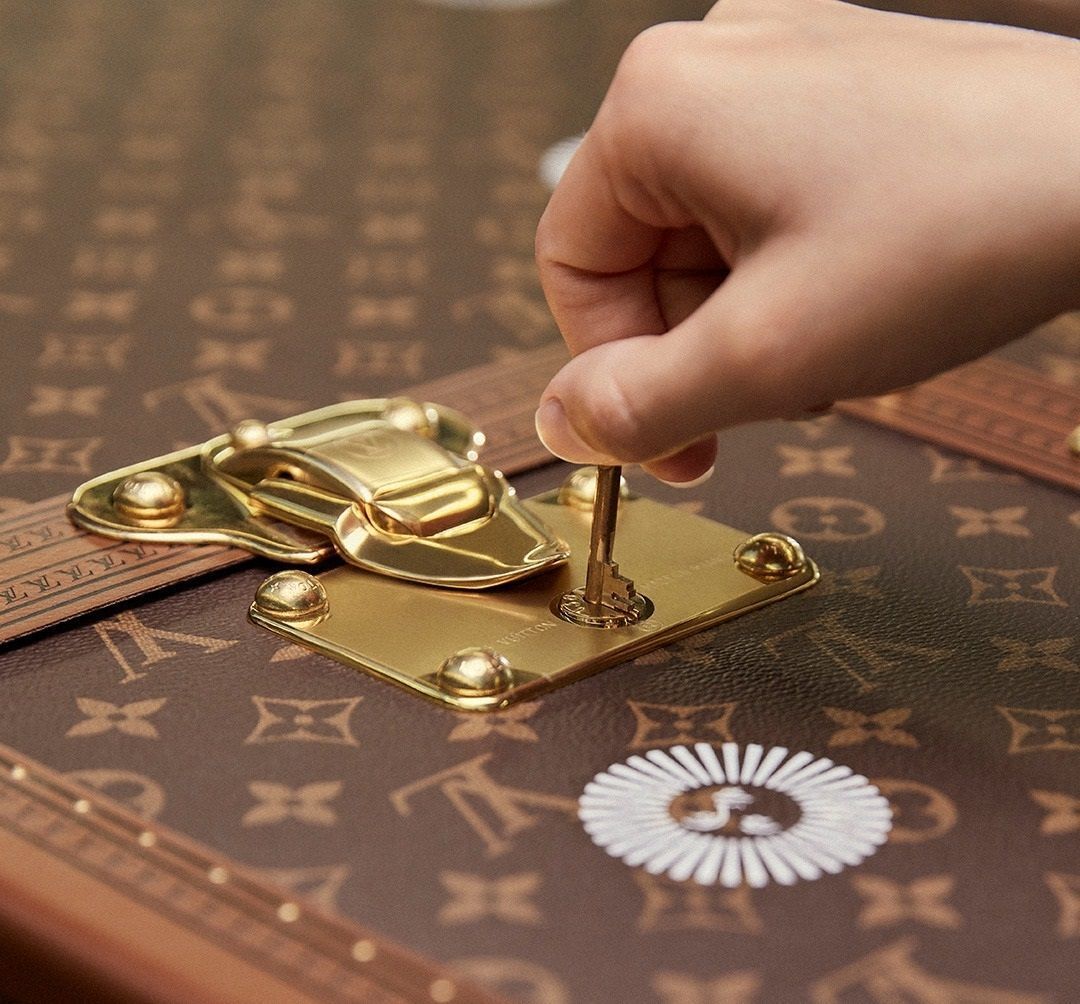
The bed trunk was revolutionary, as its flat top made it more transportable and stackable than rounded top trunks. As it was also a period when people travelled primarily in horse-drawn carriages, ships or steam locomotives, flat tops ensured that the bags could be stacked easily, resulting in better handling of baggage.
Although the trunk became instantly famous, there was still a major problem haunting founder Louis Vuitton — theft. In those days, belongings were often stolen from trunks by ingenious thieves.
Thus, Georges Vuitton, Louis Vuitton’s only son, worked with his father to design a lock mechanism in 1886 which completely revolutionised baggage safety. The system, which came with two spring buckles, was renowned for being pick-proof. Later patented by Georges, the lock has been so effective that Louis Vuitton bags continue to feature it to date.
Georges took over the reins of the brand, which was still known as a luxury luggage maker, after Louis Vuitton passed away at the age of 70 in 1892. A year later, he presented the brand for the first time outside of France at the Chicago World Fair.
In fact, Georges’ ingenuity was key to the expansion of his father’s eponymous brand into a globe-trotting giant in the world of luxury living.
The iconic Louis Vuitton monogram
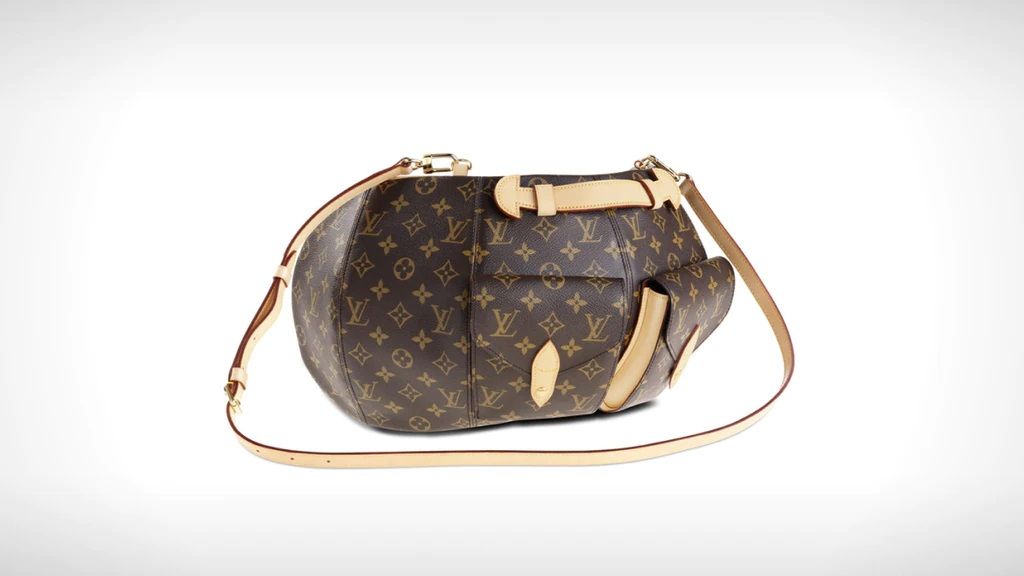
One of the most famous things that Georges did during his time as the head of the luxury fashion house was to give it an enduring symbol — the world-renowned Louis Vuitton Monogram.
The brand had been struggling with counterfeits of its products even when its founder was alive. He started using Damier print canvas and hand-painted striped patterns on future Louis Vuitton trunks in 1876 to distinguish Louis Vuitton authentic products from cheap copies. The Damier print canvas was especially noteworthy, for it was marked “marque L. Vuitton déposée” on the inside.
In 1896, Georges designed the brand’s beige-on-brown signature monogram canvas, showcasing graphic flowers and quatrefoil with his father’s initials “LV.” The classic monogram has featured prominently on nearly every product that the luxury label has since produced. Though its design underwent minor modifications, the monogram has remained the defining symbol of the brand, making its creations easily distinguishable in the world of luxury lifestyle.
Louis Vuitton celebrated the 100th anniversary of the monogram in 1996 by inviting six fashion designers — Vivienne Westwood, Romeo Gigli, Sybilla, Manolo Blahnik, Isaac Mazrahi and Helmut Lang — to create unique Louis Vuitton luggage pieces while incorporating the iconic print. The collection, which included a vinyl record box, a backpack with a built-in umbrella and an oval-shaped shoe trunk, was then exhibited across the world.
A historic request and a controversy
By the first quarter of the 20th century, the brand caught the eye of French fashion designer and businesswoman Coco Chanel. And in 1925, she requested the brand to produce the iconic domed handbag, which was then dubbed Squire. Thirty years later, the same Louis Vuitton bag would be renamed Alma.
The success of the collaboration led to the creation of the Louis Vuitton Speedy and the Keepall among other compact bags in the 1930s.
Gaston Louis Vuitton, Georges’ eldest son, took up the brand’s reins following the death of his father in 1936. As Europe plunged into World War II, Gaston steered the brand through the turmoil while ensuring that it remained relevant and innovation continued unhindered.
However, this period may have stained the brand. The Guardian in 2004 reported that a book titled Louis Vuitton, A French Saga by French author Stephanie Bonvicini alleged that members of the Vuitton family supported the Vichy regime under Marshal Philippe Pétain and made money from business deals with the Germans during World War II.
Bonvicini told the media house that when she asked for details of the brand’s wartime activities, the company told her that documents from the years 1930 to 1945 had been destroyed in a fire.
By the time of the revelation, Louis Vuitton was already under the ownership of LVMH. According to The Guardian, an LVMH spokesperson told the French satirical magazine Le Canard Enchainé, “We don’t deny the facts, but regrettably the author has exaggerated the Vichy episode.”
Following the revelation, an LVMH spokesperson told The Guardian, “This is ancient history. The book covers a period when it was family run and long before it became part of LVMH. We are diverse, tolerant and all the things a modern company should be.”
Celebrities carrying LV bags and the LVMH merger
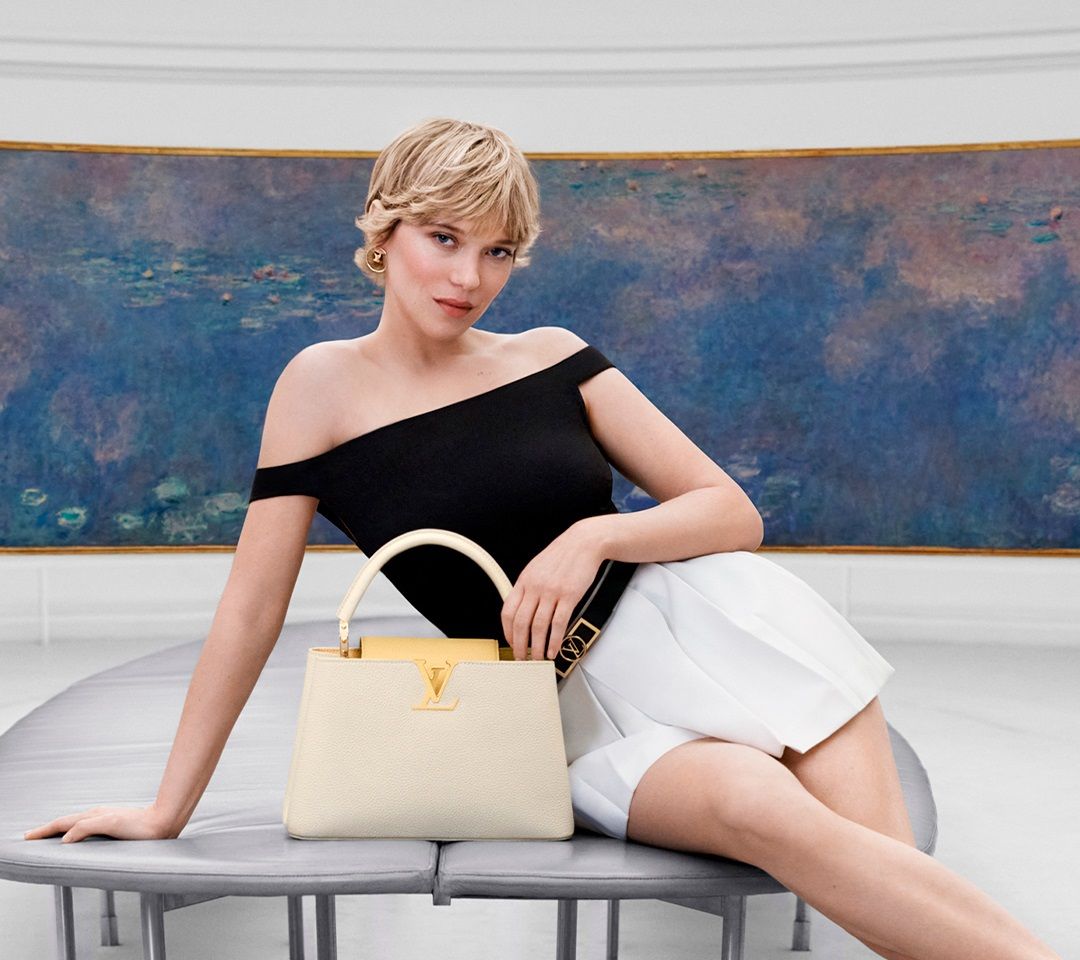
Besides the controversy, Gaston’s time as the head of the family legacy was instrumental in building upon the foundations and pillars laid by his father and grandfather.
He introduced leather into Louis Vuitton creations and in 1966, unveiled the cylindrical Papillon bag, which continues to be one of the most famous products by the Louis Vuitton label.
During the 1960s, with its growing renown, Louis Vuitton bags were being spotted on celebrities, including French singer and actress Juliette Greco and French actress Catherine Deneuve, as well as the latter’s fashion photographer husband David Bailey.
Italian actress Anna Magnani was famously photographed during her vacation in Paris in 1960 with a stack of Louis Vuitton bags.
Following Gaston’s death, Henry Racamier, who had married Odile Vuitton, became the successor in 1977.
Despite its popularity among the French elite, there were only two Louis Vuitton stores in France and sales volume was less than USD 10 million. Racamier, who was a self-made steel tycoon, is credited with firmly placing Louis Vuitton on the world stage.
Under him, the luxury fashion house started expanding with more stores in major cities outside France. Within 10 years of Racamier assuming charge, the Maison opened over 100 stores globally.
In 1984, the business ceased to be family-owned and went public before merging with the luxury champagne brand Moët et Chandon and cognac brand Hennessy three years later to form, what is today, LVMH.
Racamier was in charge of LVMH until a legal tussle led to his ouster and Bernard Arnault taking control in 1990.
Interestingly, while Louis Vuitton was a phenomenon in luxury bags, its gargantuan rise in the world of fashion did not exactly begin until the 1990s.
As a brand, Louis Vuitton embarked on its new exploration of the luxury fashion world and the contemporary dressing of an elite clientele, primarily after becoming part of LVMH.
The seed of this new orientation towards fashion was planted after Yves Carcelle became the brand’s president in 1990 — the same year when the Vuitton family’s managerial control over the brand effectively ended.
Seven years later, Louis Vuitton would get on board a young New York-based fashion designer who would not only elevate the brand as a label but also transform the world of fashion; he was Marc Jacobs.
The rise of Louis Vuitton under Marc Jacobs
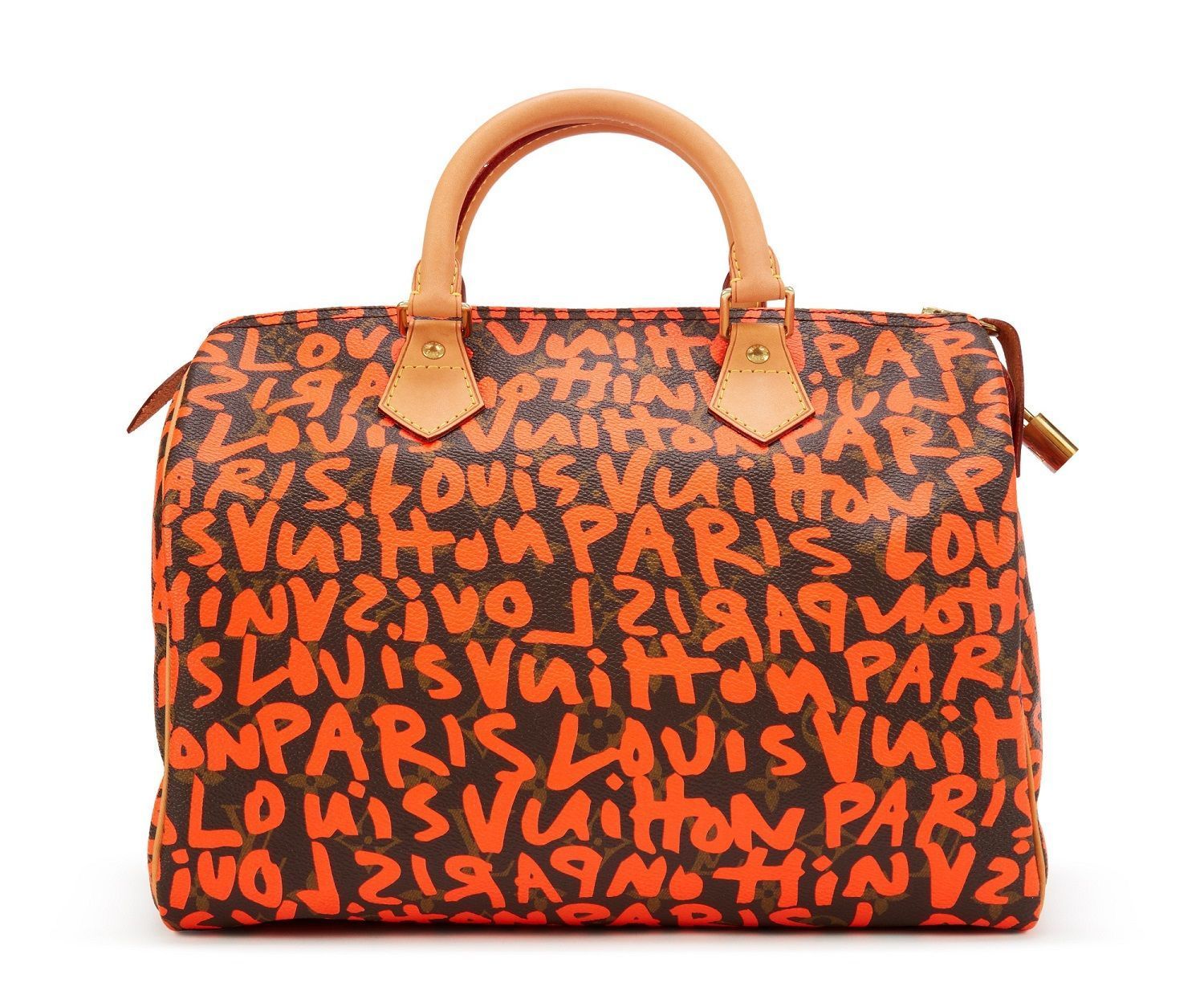
Jacobs, an American, arrived at Louis Vuitton as its creative director in 1997 and the following year, he launched the brand’s first-ever ready-to-wear line.
Thus began the brand’s storied rise as a fashion behemoth, which today stands as tall as its equally illustrious competitors outside of the LVMH umbrella such as Gucci, Balenciaga, Calvin Klein, CHANEL and Burberry.
Jacobs was a master conductor of the runway. His innovative designs had a magnetic pull on fashion enthusiasts, and supermodels, such as Naomi Campbell and Kate Moss, walked the runway wearing the creations.
During his 16 years at Louis Vuitton, Jacobs gave a new identity to the classic monogram canvas by using them liberally on everything — from hats to fans and tights to jackets — as a print pattern. Many of the creations were available for sale in Louis Vuitton stores, helping the brand reach out to an even wider set of high-net-worth patrons who wanted to be seen in Louis Vuitton fashion.
The immensely creative mind of the maverick fashion designer was also instrumental in the brand’s collaborations with some of the finest contemporary artists of the world. This redefined Louis Vuitton’s iconic bags and was marked for the artists’ personal styles.
One of the most noteworthy collaborations was with Stephen Sprouse in 2001, three years before the American artist’s death from cancer. The product — Graffiti Speedy — is to date considered a landmark among Louis Vuitton bags.
As the name suggests, Sprouse overlaid the Speedy bag with the words “LV”, “Speedy” and “Louis Vuitton” appearing as spray-painted graffiti rendered in myriad colours. This unique styling was a far cry from the more sophisticated appearance of the usual LV monogram.
It was a megahit among all Louis Vuitton fans, so much so that Sprouse’s graffiti style was reused by Jacobs multiple times. One of them was a special tribute to the artist in 2009 in which Jacobs used a rose drawn by Sprouse on Louis Vuitton bags.
Another famous collaboration of Jacobs was with Takashi Murakami. The legendary Japanese contemporary artist gave his own spin to the LV monogram, releasing bags bearing the iconic brand symbol in playful colours, including hot pink, turquoise and Kelly green.
Dubbed the Monogram Multicolore collection, its design has been a major hit with younger fans of Louis Vuitton ever since.
Murakami and Louis Vuitton continued their collaboration over the decade with collections, including Cherry Blossom (2003), Monogramouflage (2008) and Cosmic Blossom (2010), featuring everything — from cherry blossom designs to Murakami’s signature kawaii illustrations.
Jacobs remained at the helm of the creatives at Louis Vuitton till 2014. He left his position to completely focus on his eponymous label, which he had founded years before joining the French luxury brand.
Fashion legends Nicolas Ghesquière and Virgil Abloh bring in new perspectives

French fashion designer Nicolas Ghesquière was appointed artistic director of women’s collections in November 2013, a month after it was revealed in the press that Jacobs is planning to leave the brand.
Ghesquière, who was formerly the creative director of another world-famous luxury fashion label, Balenciaga, immediately got down to business and released the Petite Malle bag at the Fall 2014 fashion show. The Petite Malle, whose name means “small trunk,” is universally hailed as one of the best Louis Vuitton products.
For the Petite Malle, Ghesquière drew inspiration from the earliest days of Louis Vuitton and recreated the brand’s original trunk shape and design as a miniature handbag. As such, its design incorporates the iconic LV S-lock, calfskin leather and golden brass detailing that were signature aspects of the early trunks.
For his first, highly anticipated collection for Louis Vuitton, Ghesquière borrowed the style ideas from the 1960s through the early ’80s to create racer-leather pants, abbreviated A-line skirts, zip-up high-necked sweaters and boxy jackets. The use of leather and the designer’s geometric perfection across the creations instantly appealed to everyone.
While Ghesquière continued getting the brand the attention it deserved in the women’s line, the men’s line was being handled by Kim Jones.
As the men’s artistic director since 2011, Jones was instrumental in bringing streetwear style to the house and made headlines for the brand’s collaboration with American clothing company Supreme.
Jones, however, left Louis Vuitton for Dior Homme. In 2018, his vacant position was filled by one of the greatest names in the world of fashion — Virgil Abloh.
The French luxury brand appointed Abloh as its men’s artistic director, which made him the first person of colour to hold the position in Louis Vuitton.
Abloh, who founded the fashion label Off-White, debuted 56 styles for Louis Vuitton as part of his first collection, known as Colour Theory, at the Paris Fashion Week in June 2018. Models walked down the ramp wearing unique apparel. These included anoraks with cuts at the back to fit in bum bags, leather vests with the LV monogram, and double-breasted wool-mohair blazers. The models sported accessories such as the Petite Malle and Keepall, reimagined in multiple colours, matte leather and hardware detailing.
The year 2021 was especially significant for both Abloh and Louis Vuitton with BTS, the globally renowned Korean pop boy band, becoming the new ambassadors of Louis Vuitton in April. The boy group joined the likes of Emma Stone, Sophie Turner and Naomi Osaka as the face of the brand.
In July, the group made its runway debut with a special fashion film at Louis Vuitton’s Fall/Winter 2021 menswear show in Seoul wearing Abloh’s creations.
All seven members — Jungkook, J-Hope, V, RM, Jin, Suga and Jimin — were dressed differently and their looks were uniquely accessorised. These included monogrammed sunglasses, white and green LV trainers, Louis Vuitton coffee cups and long coats with airplane motifs.
Outside of fashion, LVMH and Abloh reached an agreement under which the conglomerate took a majority stake in Off-White.
Abloh’s association with Louis Vuitton was, however, cut short by his untimely demise in November 2021. He had been diagnosed with a rare form of cancer in 2019. Louis Vuitton released his final collection in April 2022, for which Abloh partnered with Milan-based tattoo artist Ghusto Leon.
Louis Vuitton sees a future in the metaverse
The French fashion house is one of the earliest brands which took a deep interest in the future of fashion in the metaverse — a concept that is loosely understood as a platform where people can interact with each other and their environment virtually.
As part of it, the brand launched an adventure-based game, known as Louis the Game, in August 2021 to commemorate the 200th birth anniversary year of founder Louis Vuitton.
Introducing Louis The Game. Join Vivienne in collecting 200 birthday candles as she retraces #LouisVuitton’s story over two centuries and try to find one of the 30 precious NFTs. Discover the new game in honor of #LOUIS200 at https://t.co/5vpMF3AQDy pic.twitter.com/tpAM5rZhjR
— Louis Vuitton (@LouisVuitton) August 10, 2021
Playing as Louis Vuitton’s mascot, Vivienne, gamers need to collect 200 candles by dressing their avatars in the digital versions of Louis Vuitton fashion wear. The primary attraction of the game is non-fungible tokens (NFTs) — digital assets that are integral to the metaverse. Acclaimed digital artist Beeple created 30 NFTs for Louis the Game.
By April 2022, the game had been downloaded over two million times. New NFTs have been added, and players get a chance to collect more through special events like the NFT raffle, the last of which ended on 4 August 2022.
(Main image: cody gallo/@gallocody/Unsplash; Featured image: Louis Vuitton/@LouisVuitton/Facebook)

